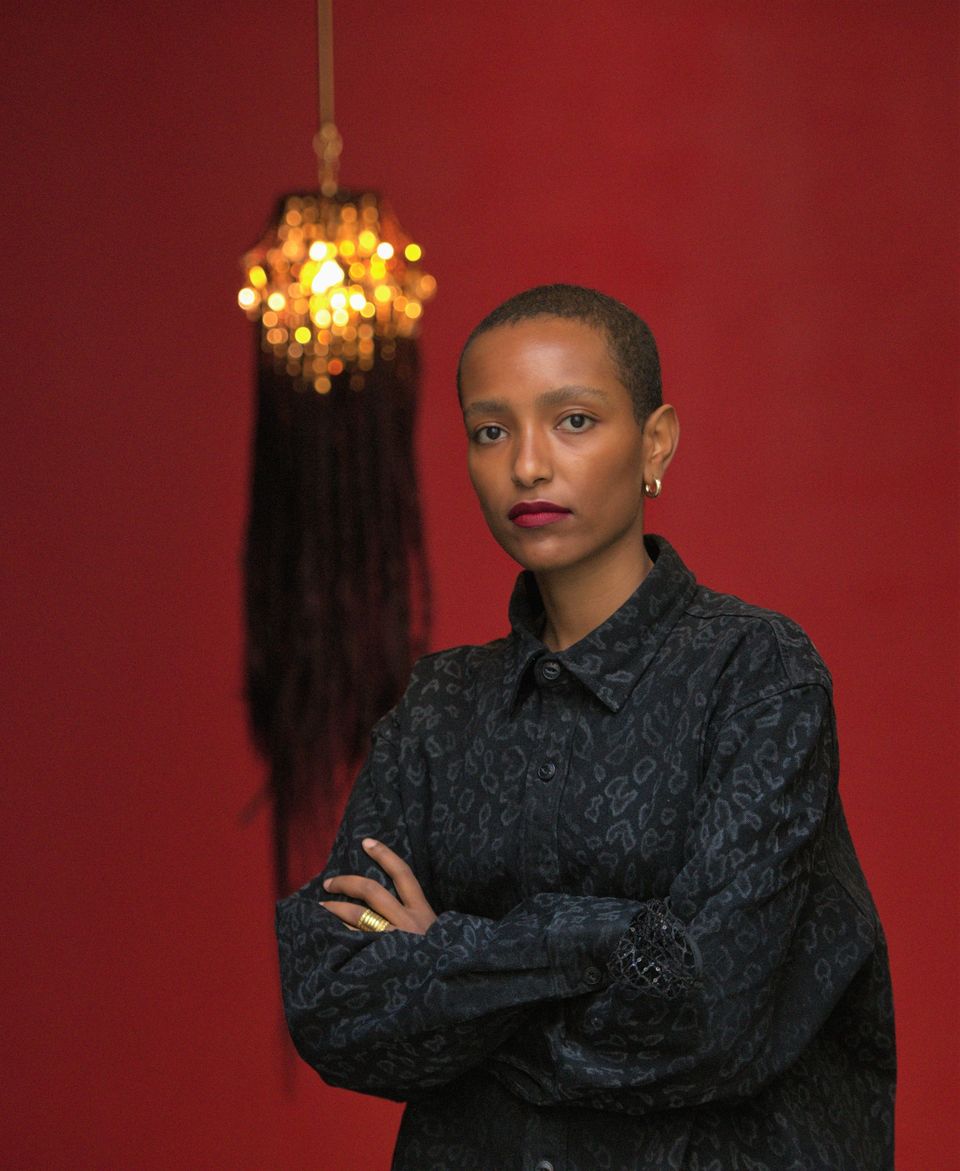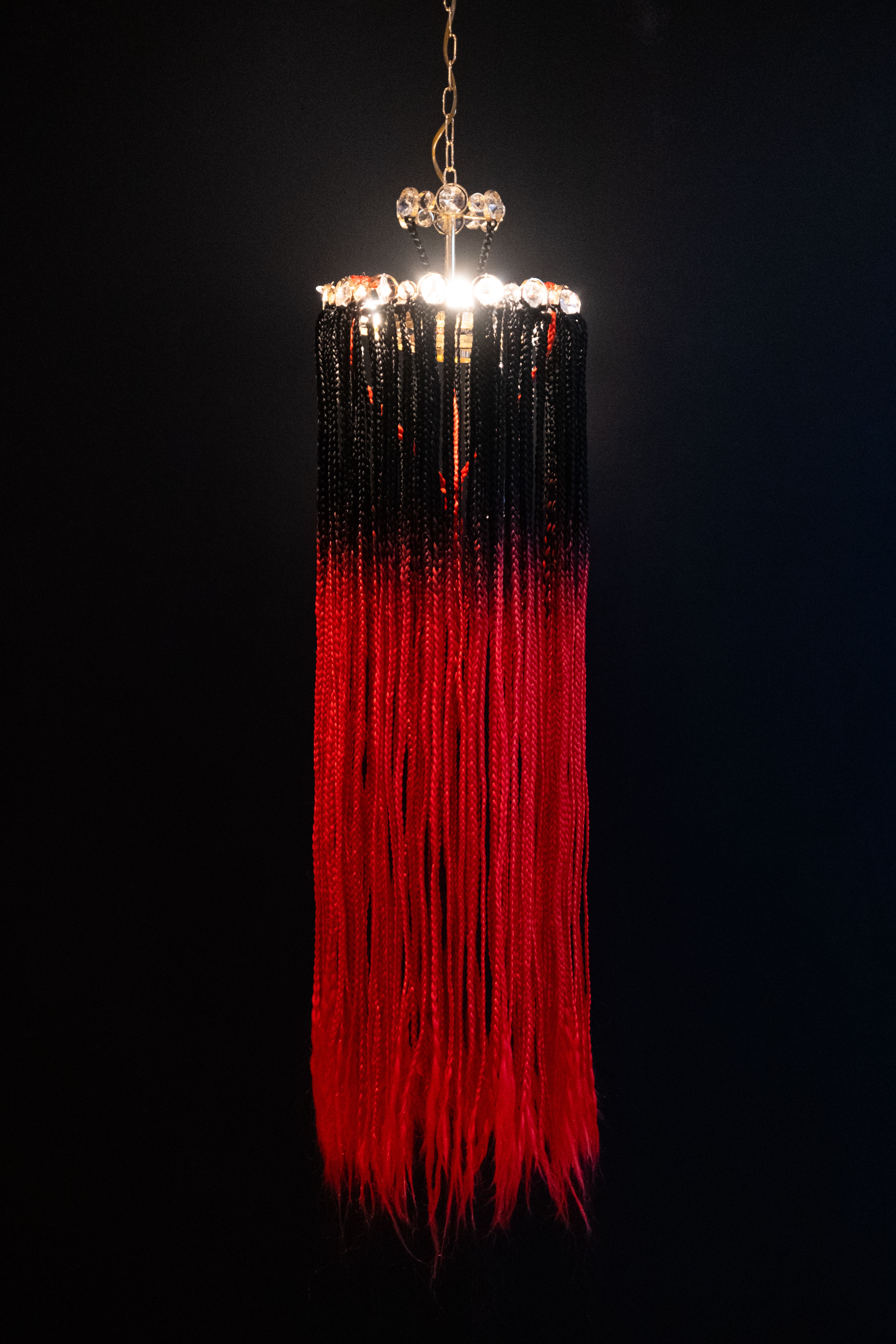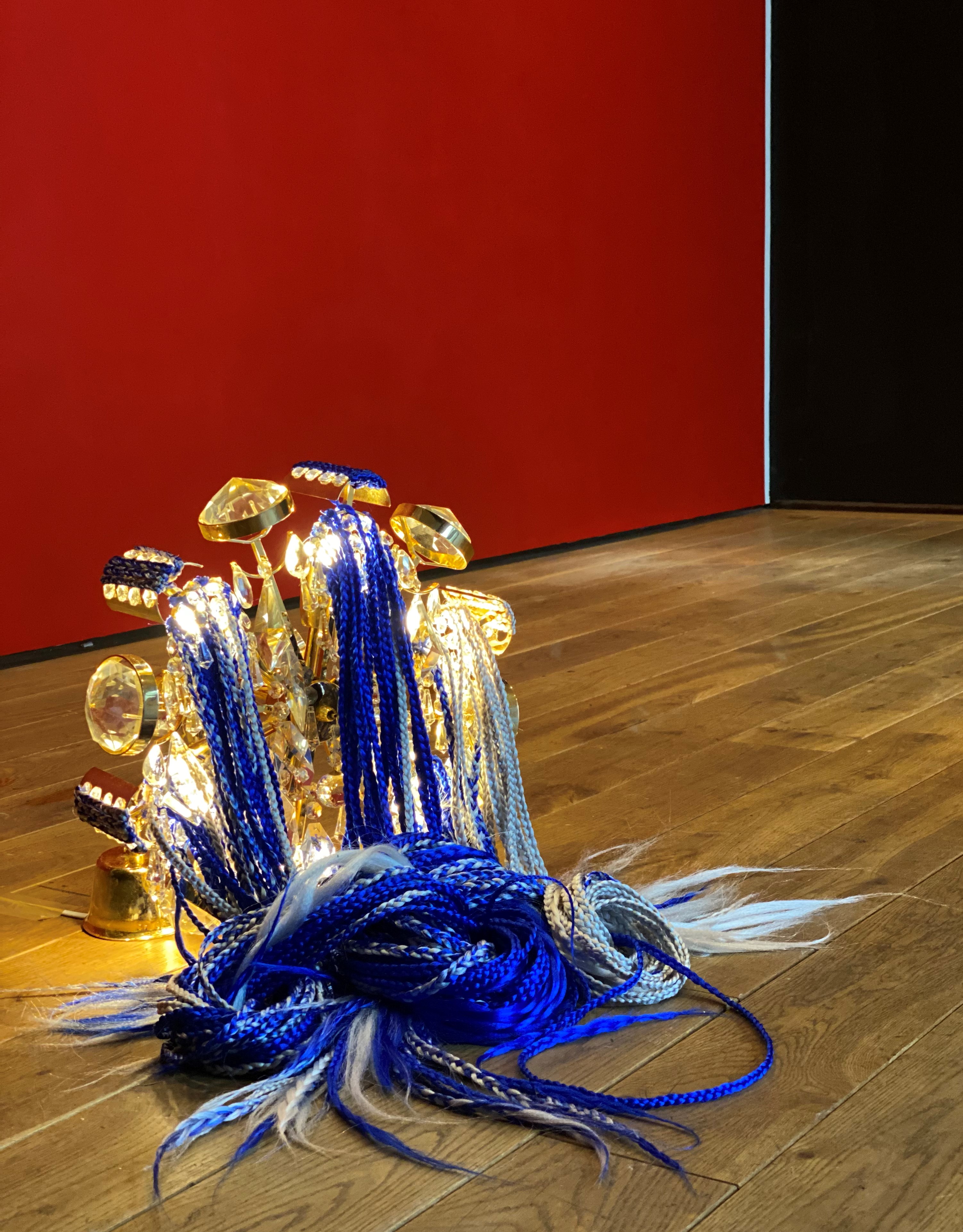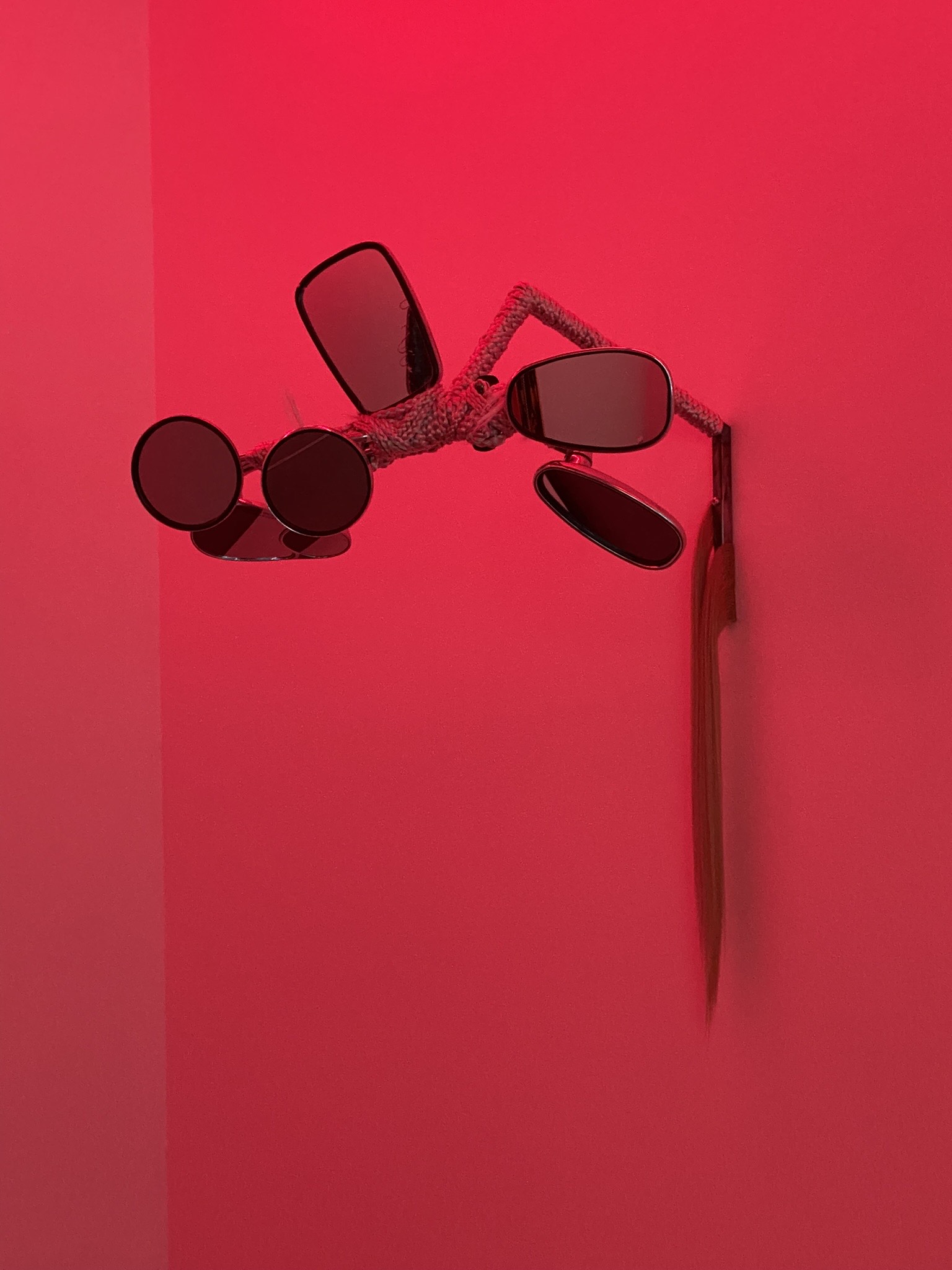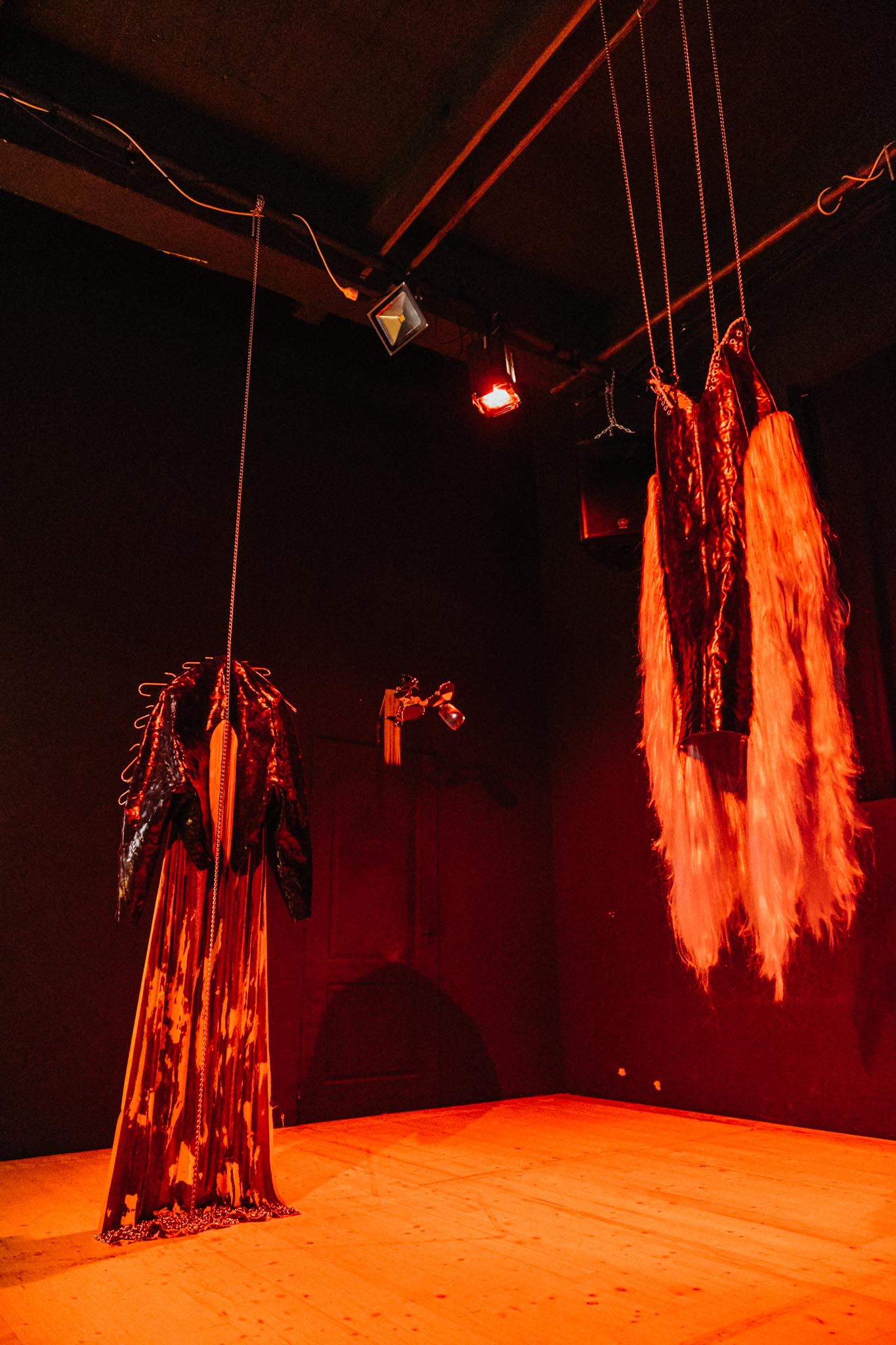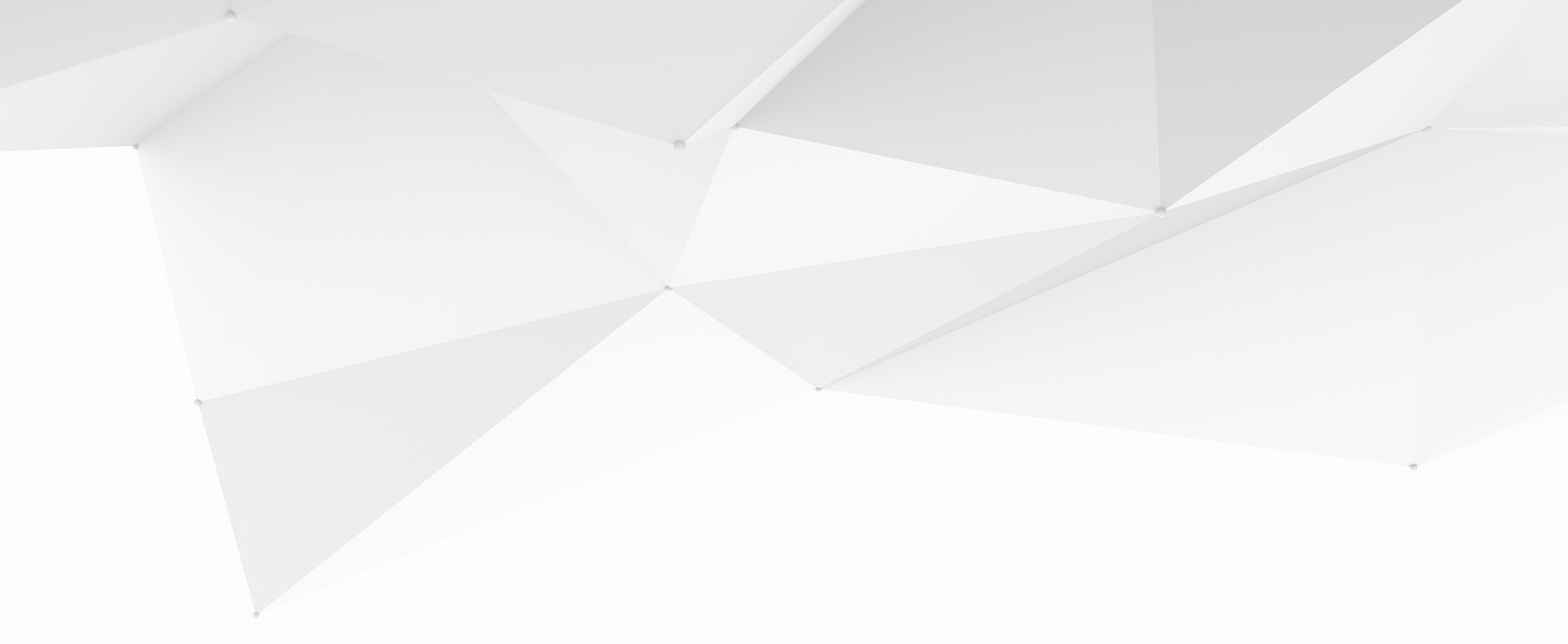Margaret Abeshu (b. 1990), originally from Ethiopia but settled in Oslo, is an interdisciplinary designer who uses in her work the influences of childhood memories and personal experiences as a multicultural identity. The artist also explores the relationship between body, spirit and object through her creative process.
Through the interview, we can get closer to Margaret and we will find out how was her first experience in Romania, what were the things that inspired her to create and, above all, where all this artistic power comes from.
1. You’ve collaborated with AMES for the Lockout Stereotypes exhibition hosted by WASP in Bucharest. How did all of this begin?
I think it was through the recommendation of Ingri Fiksdal, who I have worked with before. I was contacted by Andreea with the proposal which I found very exciting. This was a great opportunity I wanted to accept, to come to Bucharest, be a part of a group show, connect with new people and gain new knowledge.
2. What was your experience working with Andreea Capitanescu, the curator of the exhibition?
My experience was wonderful. From day one Andreea was very supportive and had a strong belief that my work would fit in within the project. Together with the rest of the team of AMES, they facilitated everything I needed and welcomed me warmly, which I really appreciate.
3. The core subject of the exhibited works is a social one, addressing issues of a discriminatory nature based on ethnic and gender criteria. What was it like interweaving your story with the story of the other artists?
My work is already centered around radical black study and AFRO-diaspora experience from the past, present, and future. Both from personal and collective perspectives I do understand the paradigms of discriminatory especially racially, ethnically and gender. Even if I know very little of Roma people’s history within Romania’s cultural and socio-political context, I can draw parallel experiences within my own experiences as an Ethiopian woman living in Norway, or to the history of African descendants within the new world we call western.
I think my work naturally brings a new and familiar perspective that goes well together with the intentions of the initiative of the project and the rest of the artists work as well.
4. Your works exude a lot of power; can you describe to us parts of the unseen process of your works?
My work process is very much based on both theory and practice. I consume works of black radical thinkers, but also, I try to engage in dialogue with people around me. Conversations do bring different entries and the way I understand things. I am also very much in solitude when I work, I enjoy being with my own self, or rather with the thoughts I have been consuming and the ideas that continue to emerge in the process.
I try to put all these feelings, questions, thoughts into something tangible that can communicate, intervene, or rather reactivate a conversation. I am a firm believer in craftsmanship, creating things as I am navigating and processing and learning truly motivates me the most, even if the process is not always easy.
5. This exhibition brought you to Romania for the first time, how did you feel here? Which memory do you think will persist the most / was the most meaningful?
I really wish I had more time to experience Romania for more than 2 days. In a strange way in that short amount of time I did feel home, there was something very familiar and warmer about the atmosphere and the people.
My best memories must be the people I met and the late conversations I had. And all the teenagers who came to see the show were so incredible. They gave me the biggest group hug and were very open and had a lot of good questions both about my practice and the art world. I also really appreciate the guys who worked tirelessly to install my work, I did gain so many friends which I am very grateful for.
6. Do you foresee other collaborations with the 4Culture association?
Yes of course, I really do want to come back. It is sad that I could not make it for 6th of July. I think also this bridge building across countries and perspectives will just open up more opportunities in both ways.
7. The exhibition will find a new place to be hosted in Ploiesti, what kind of impact do you think it will leave in that place?
I really hope it can open a conversation, at least some questions. You do not really know how people will react to your work, especially exhibited in a different cultural context. As most artists I want to invoke, provoke some sort of feeling that can transcend through these works.
8.Can art make a better world?
Art is a necessity for our existence! Art can make us raise important questions about the world, our selves, realities and so on. Whether we commodify it or not, institutionalize it or not, art has always been a part of how we relate to one another, socially, imaginary and so on. Art amplifies the world we want to exist within, how better that is depends on what we do as a collective/society. So only art by itself can not make the world better, but it surely helps us navigate our world and the challenges we face. It might not have a solution but it helps us to understand why things are the way they are etc. or to accept the things we don’t understand.
The artworks in the gallery are a part of the exhibition Lockout Stereotypes. Counter-cliché and the Solo Exhibition : Ubiquitous Shadow.
Images 1 and 2 – Ubiquitous Shadow; images 3 and 4 – Lockout Stereotypes. Counter-cliché.
